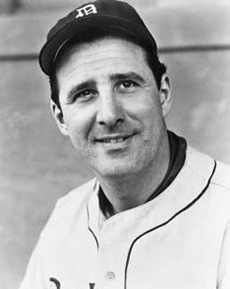From The Peopling of New York City
The term "assimilation" with regard to Jews generally does not have a good connotation. It implies a loss of religiosity, and consequently a loss of ethnic identity. It was therefore a matter of some conflict among Jewish immigrants whether to adopt American culture, and to what extent. Many Jews from Europe were observant out of habit, and did not have a problem with integrating into American life, but many of the more religious were afraid it would be a bad influence on their religiosity. Often the children would feel more comfortable with American society, to the point that it was often said that "in America the children bring up the parents."
One interesting point of contention was baseball. Although it was a just game, it was (and still is) taken very seriously. The seriousness with which it was treated concerned some parents, and many did not want their sons playing the game for fear that it would interfere with their education and ability to earn a living. One father wrote to the Jewish Daily Forward requesting advise on how to approach his son's avid interest in the sport:
"What is the point of this crazy game? It makes sense to teach a child to play . . . chess . . . I want my boy to grow up to be a mench, not a wild American runner."
Actor and radio host Eddie Cantor remembers his grandmother calling him a baseball player when she was angry. He says many immigrants, instilled with an tireless work ethic, considered baseball players "the king of loafers."
Abraham Cahan, editor of the Forverts urged parents to allow their sons to "play baseball and become excellent at the game. . . . as long as it does not interfere with their education, [because] the body needs to develop also." He was not entirely embracing of American ideals, however, warning that "The really wild game is football. . . . Accidents and fights occur in football, but baseball is not dangerous." [1] [2]
And they did become excellent. Hank Greenberg, born on the Lower East Side and raised in the Bronx, while not religious, did nothing to hide his heritage. He is known for refusing to play in the 1935 World Series on Yom Kippur, one of the High Holidays. This inspired the poem by Edgar Guest, a poet and reporter for the Detroit Free Press:Come Yom Kippur - holy fast day wide-world over to the Jew -
And Hank Greenberg to his teaching and the old tradition true
Spent the day among his people and he didn’t come to play.
Said Murphy to Mulrooney, "We shall lose the game today!
We shall miss him in the infield and shall miss him at the bat,
But he’s true to his religion - and I honor him for that!"
More interestingly, but not commonly known, is that in the Bronx, he would occasionally autograph baseballs in Hebrew. When he was on pace to break Babe Ruth's home run record of sixty in a season, (although he didn't make it in the end), his mother promised to make sixty-one baseball-shaped servings of gefilte (filled) fish, a traditional Jewish dish.
This was a balance everyone had to make, choosing what parts of their heritage to keep, and what part to eschew in favor of a new American lifestyle. Hank Greenberg is one example of many Jews who did not remain religious in the United States, but held on to their ethnicity, and were proud of it. [4]
A common method of measuring assimilation is by observing intermarriage with other groups. A sample census in 1957 showed that of married Jews, only about 3.5% were married to non-Jews, about 1/3 of whom considered themselves Jewish and raised their children as such. There is not much tendency to integrate residences either. American Jewish Committee reports that in a survey of a New York suburb, 50% said they would like to live in a 50% Jewish neighborhood, 25% said they prefer 75% Jewish. [5]
- Return to Assimilation
- Return to Jewish
References
- ↑ Binder, F., & Reimers, D. (1996). All the Nations under Heaven. New York: Columbia University Press.
- ↑ Epstein, L., (2007). At the Edge of a Dream: the Story of Jewish Immigrants on New York's Lower East Side, 1880-1920. San Francisco: Jossey-Bass.
- ↑ http://www.ajhs.org/publications/chapters/chapter.cfm?documentID=273
- ↑ Society, A., (1999). American Jewish Desk Reference. New York: Random House.
- ↑ Glazer, N., & Moynihan, D. (1970). Beyond the Melting Pot. Cambridge: M.I.T. Press.
